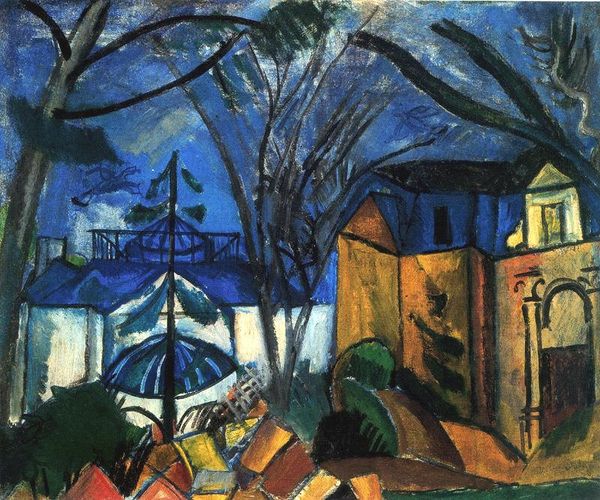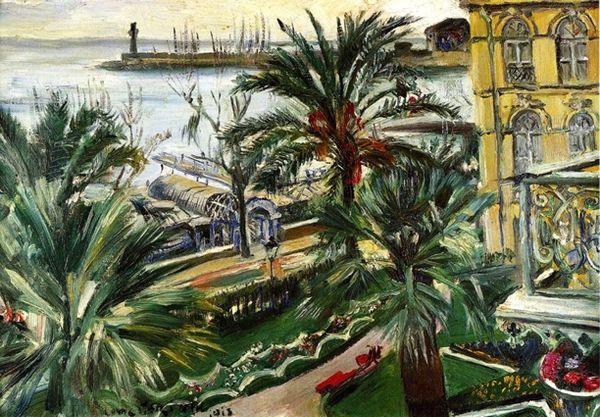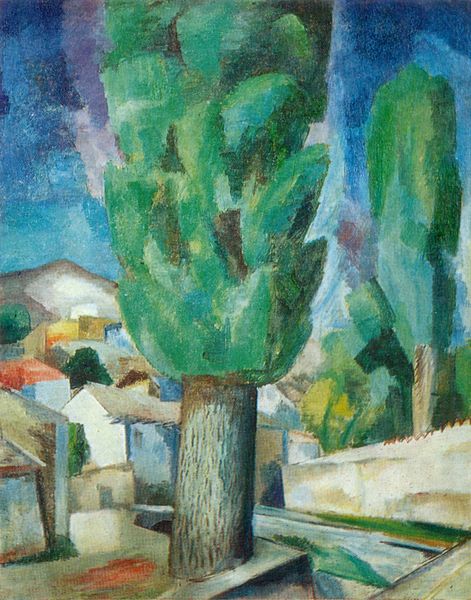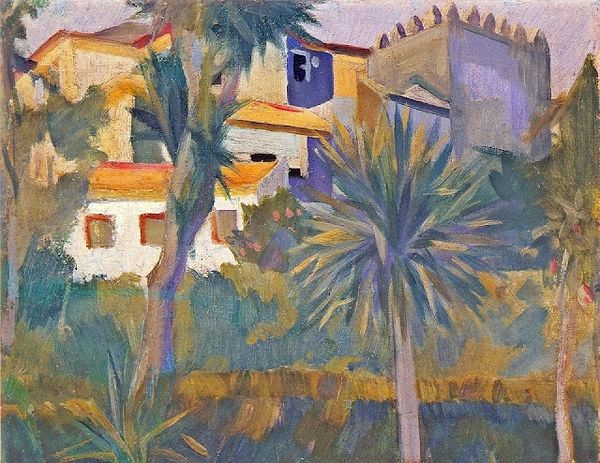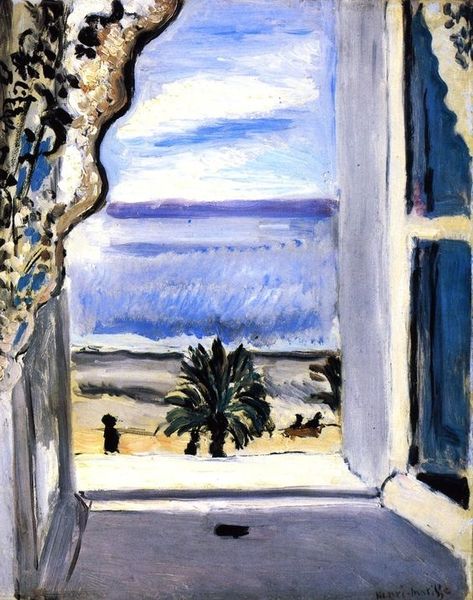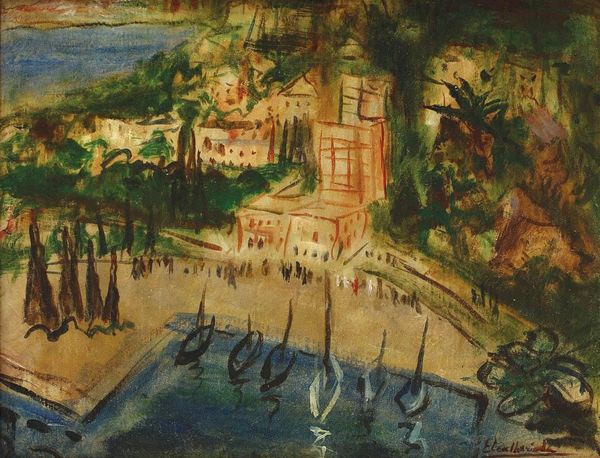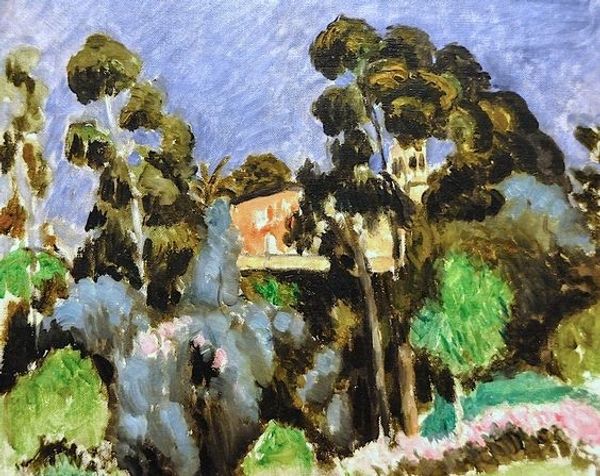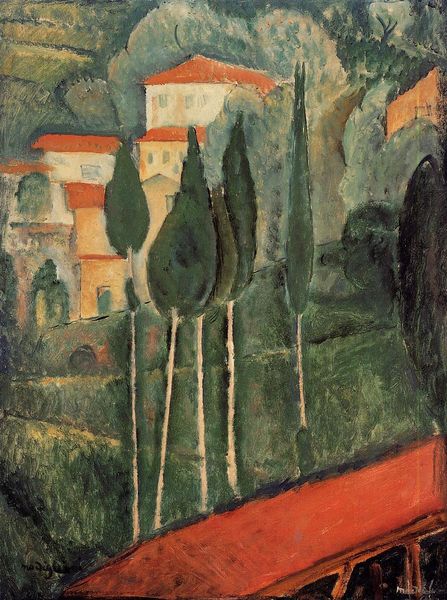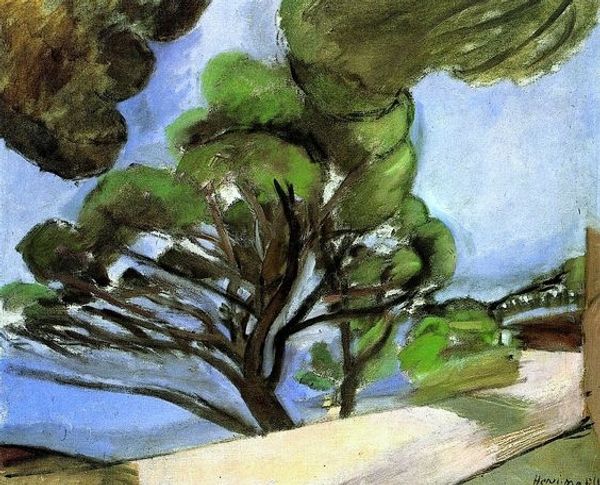
#
tree
#
possibly oil pastel
#
oil painting
#
fluid art
#
acrylic on canvas
#
coloured pencil
#
plant
#
painting painterly
#
watercolour illustration
#
botany
#
mixed medium
#
watercolor
#
environment sketch
Copyright: Public domain US
Curator: This is Henri Matisse’s "Landscape," painted in 1917. What are your initial thoughts on this piece? Editor: Sun-drenched, slightly melancholic...like the ghost of a memory of a place I've never been. It feels… unfinished, intentionally so. There’s a lightness to the application of color, very dreamlike. Curator: Interesting. It was painted during World War I. Matisse moved to Nice, seeking refuge from the conflict, and this landscape reflects that search for tranquility amid upheaval. Consider how landscape painting was perceived then, shifting from the academic to more modern approaches. Editor: Yes, that explains the melancholic feeling! It is a scene of refuge, I was sensing it. You see how he simplifies forms—palm trees become almost graphic elements, and the buildings...they're just suggestions. He’s not copying nature; he's channeling an experience of it. It almost feels raw. Curator: The Fauvist influence is evident here, although toned down compared to his earlier, more overtly radical work. The choice of colors and their application—notice how the blues in the sky and the greens in the foliage interact—demonstrates Matisse's mastery of color theory and pictorial space. This painting, while seemingly straightforward, carries social significance and personal history. It showcases an evolution in art making: painting outdoors but taking on different perspectives. Editor: It also hints at the broader artistic landscape of the time. There's a push and pull between representation and abstraction that's quite captivating. I can almost feel the warm Mediterranean air just by looking at the canvas. It’s deceptively simple and immediately inviting to project into! Curator: The deliberate unfinished feeling mirrors a search for meaning when traditional sources of cultural identity or national pride felt problematic, post-war. His work can then be seen as challenging to conventional views of landscape’s cultural meaning. Editor: Thank you. It seems like Matisse gives us the outlines and invites us to fill them in with our own memories, impressions, our longing to run away from this everydayness we find ourselves in, or maybe I am projecting too much... Curator: Not at all, I think you just articulated what so many visitors experience when viewing the artwork!
Comments
No comments
Be the first to comment and join the conversation on the ultimate creative platform.
